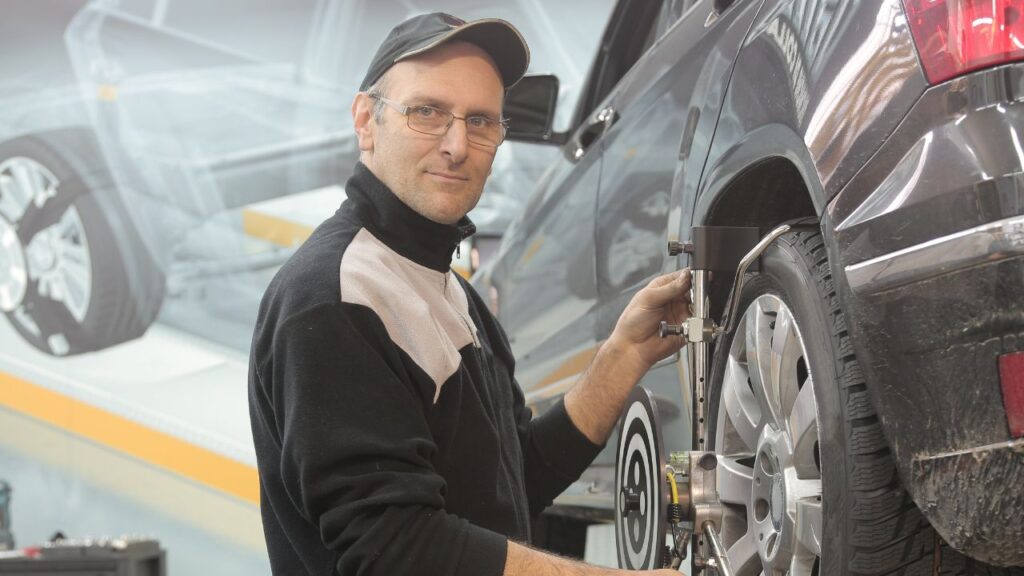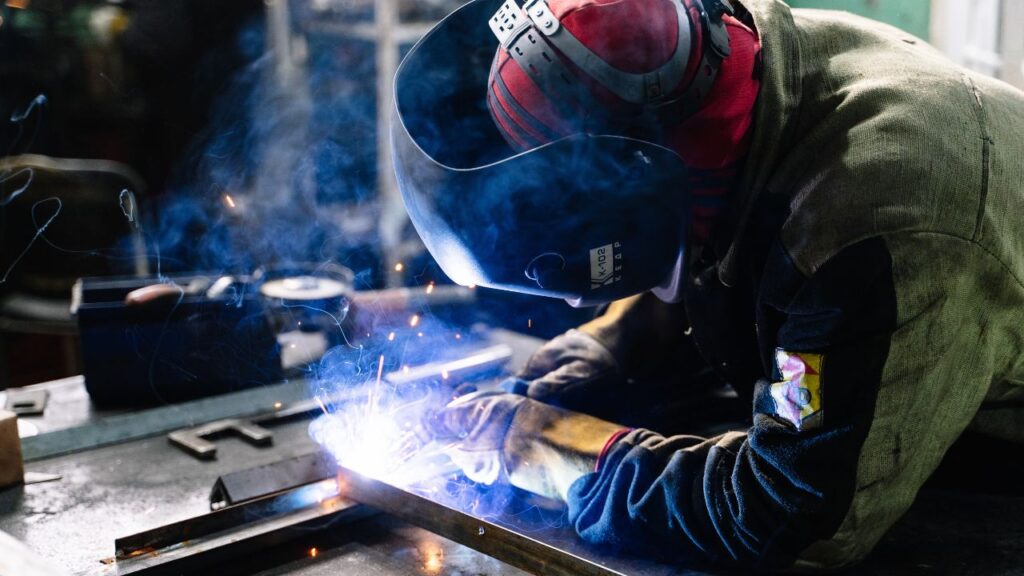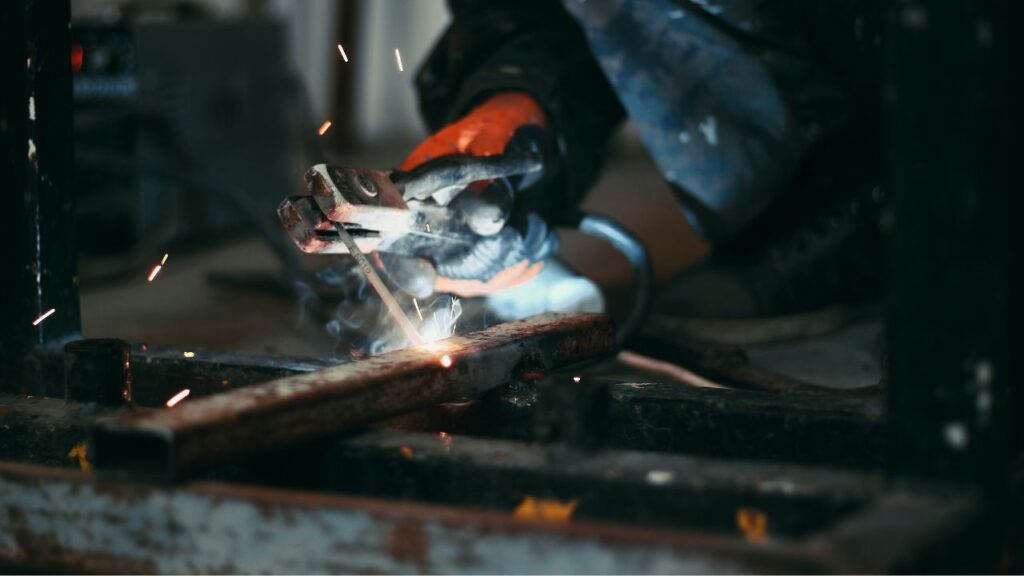In this fast-paced world, cars have become an integral part of our daily lives. Right from commuting to work or leisure long rides, cars offer relatively more convenience than any other transportation mode.
But you might be surprised to know that a car has more than 30,000 different parts. All these parts coordinate with each other so that you can easily commute from one place to another.
It might be hard to remember all the parts. But you should be aware of the basic and the most important parts that can help you to recognize the fault if your car breaks down.
In this comprehensive guide, we will discuss the most important parts of a car and their functions with pictures. So, if you are a car enthusiast or everyday driver, you will gain in-depth knowledge of the internal functioning of the car.
Most Important Parts of A Car and Their Functions
1) Engine
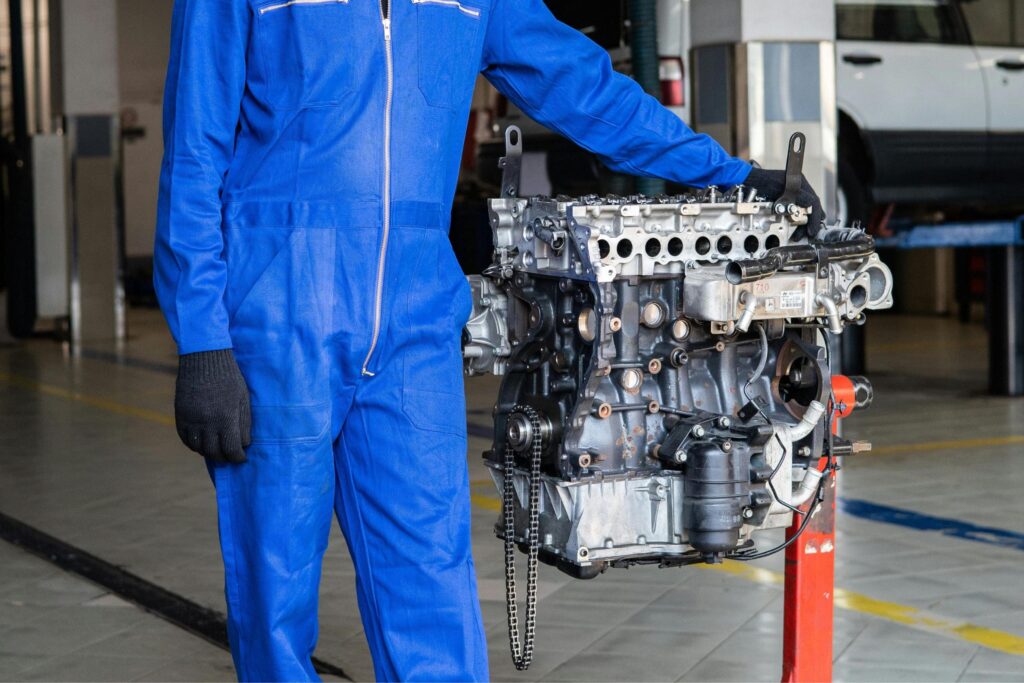
Among the most important parts of a car is an engine. It consists of various components such as heads, blocks, valves, and pistons. It operates on the principles of internal combustion, in which potential energy is converted into kinetic energy.
When the fuel injected into the engine comes into contact with compressed air, energy is generated in the form of a spark. This helps move pistons which in turn move the car’s wheels.
The key sub-components of the engine include cylinder blocks, pistons, camshaft, and crankshaft. The piston is like a spring that moves up and down in the cylinders, converting the energy obtained from combustion into mechanical energy.
As the name suggests, a cylinder block comprises cylinders in which the internal combustion takes place. The camshaft is responsible for controlling the valves of the engine from where air and fuel are intake and exhaust gases are expelled.
Further, the crankshaft helps the wheels rotate by converting the piston’s linear motion into rotational motion.
The engines of the modern car have advanced technologies such as hybrid systems and turbocharging, that increase the fuel economy while reducing the emissions. Whether the car is electric or traditional, the engine is a vital part of the car. The difference is that fuel-powered engines are relatively slower than electric engines.
2) Battery
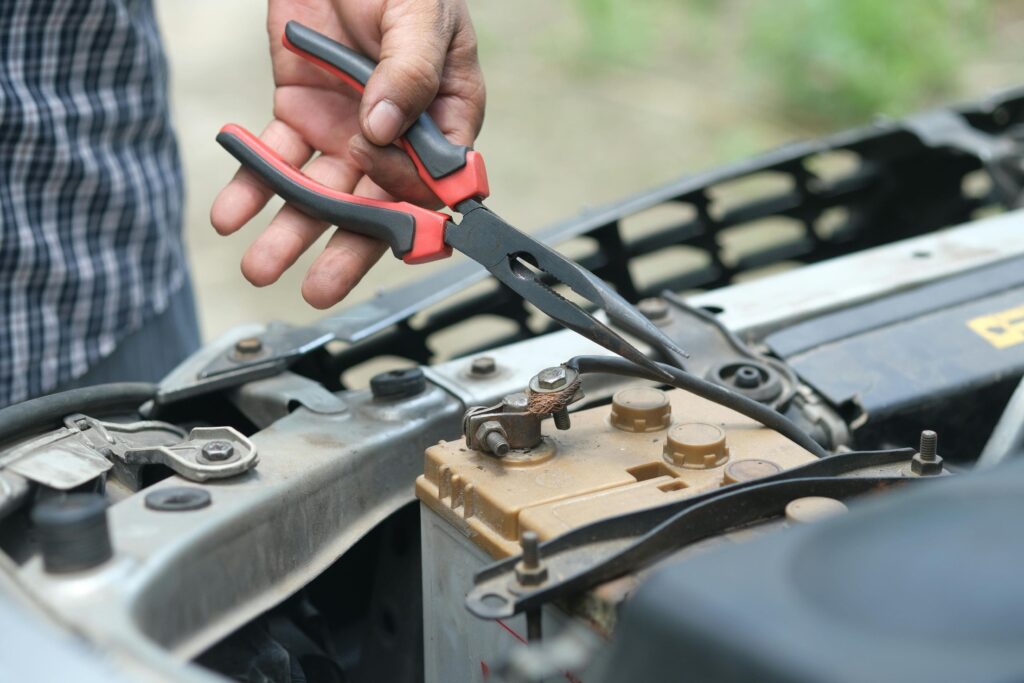
As we discuss the different yet important parts of a car and their functions, we must remember the role of the battery in the electrical system of a car.
The battery is responsible for starting the car when the ignition is turned on. It provides power to the electrical components of the car by converting its stored chemical energy into electricity.
Some terms associated with the battery include battery capacity, battery terminal, group size, cold cranking amps (CCA), and absorbent glass mat (AGM).
Battery capacity refers to the energy generated by the battery and is measured in amp/hours. Battery terminals can be understood as a means to connect the battery to the electrical components of the car.
As the name suggests, group size refers to the battery’s size. Some common group sizes of batteries include 65, 59, 58, 58R, 52, 51, 51R, 35, 34, 25, 24, and 24F. Cold-cranking amps is a term related to the car’s battery and refers to the amount of current that is sent from the battery to the car.
Lastly, an absorbent glass mat is a mat designed of fiberglass that absorbs sulfuric acid and helps prevent any leakage.
3) Alternator
Though a battery is needed to start the car, it’s an alternator that keeps the car running. The alternator works on the principle of converting mechanical energy into electrical energy.
When the engine is turned on, the engine pulley gets connected to the alternator through a serpentine belt. Since the battery supplies direct current by which the electrical car components don’t work, the alternator converts direct current to alternating current.
These electrical parts include headlights, windshield wipers, dashboard gauges, radio, electric steering, heated seats, and power windows.
The alternator recharges the battery, but if it overcharges it, the battery may malfunction. If the headlight starts dimming or if the car is unable to start, the alternator may have failed or worn out.
4) Starter Motor
The starter motor is an integral part of the electrical system as well as the ignition system of a car. Located near the engine’s flywheel, it is a compact yet powerful motor that converts electrical energy into mechanical energy.
Being an electrical motor, it gives high-torque output to prevent the initial resistance of the compression and minimize energy consumption. It contains a solenoid, high-torque motor, gear assembly, and wiring.
When the ignition key or start button is pressed, an electrical signal is sent to the solenoid to activate the motor. A solenoid can be defined as a switch connecting the battery with the motor.
The crankshaft of the motor interacts with the flywheel to rotate the engine which compresses the oil-air mixture to initiate the combustion process.
Modern cars have highly advanced motors that are more durable and reliable. They have a start-stop system by which the motor automatically turns off when the car is stopped while automatically restarting when the brake pedal is pressed.
5) Axles
As we understand the important parts of a car and their functions, let us talk about axles. An axle is a rod or shaft that connects and maintains the position of the car’s wheels. They are made of steel or Aluminium and help support the car’s weight and absorb shocks from the road.
When the gas pedal is pressed, the power is sent to the axles to rotate the wheels, letting the car move forward.
Each car has two axles: a front axle and a rear axle. The front axle is located at the front of the car and, supports the steering system and prevents shocks on a bumpy surface. It contains four parts: a beam, stub axle, swivel pin, and track rod.
The rear axle is located at the back of the car and transmits power to the driving wheels.
6) Fuel Tank

The fuel tank is yet among the most important parts of a car. Made of Aluminium, steel, or plastic, the fuel tank is located at the rear of the car. It has a small hole covered with a cap to fill the tank with fuel (gas/petrol/diesel).
Through the metallic fuel lines, the fuel is pushed from the fuel tank to the car’s engine by the pump. Similar to a tank, the fuel tank securely holds the fuel and withstands the pressure.
The capacity of the tank varies according to the size and model of the car. Modern cars have pre-installed rollover valves, which help to prevent any leakage or spillover in case of accidents.
7) Braking System
When it comes to acquiring knowledge about the important parts of a car and their functions, the braking system must be included. With the help of brakes, the car can be slowed down and stopped safely.
The braking system can be operated in two ways: mechanical control and hydraulic pressure. Among the key components of the braking system are the brake pedal, brake pads, brake lines, brake fluid, brake rotors, master cylinder, and brake calipers.
Brake pads are usually made of ceramic composite or other friction materials. Brake rotors are like discs made of metal that convert kinetic energy to thermal energy which in turn slows down the car.
The master cylinder, filled with brake fluid, has two sub-components: piston assembly and cylindrical chamber. Brake calipers are much like pistons inside the hydraulic clamps that push against the brake pads.
Lastly, brake lines, made of flexible rubber or steel, supply the brake fluid to the brake calipers from the master cylinder.
When the brake pedal is pressed, a chain reaction initiates, transferring the foot’s force onto the master cylinder. Fluid is transferred from the master cylinder to the wheels through brake lines. Friction is generated between brake pads and brake rotors, slowing down the car.
There are two types of brakes: disc brakes and drum brakes. Disc brakes use brake rotors and pads to stop the car, while drum brakes use brake shoes and drums.
8) Steering System
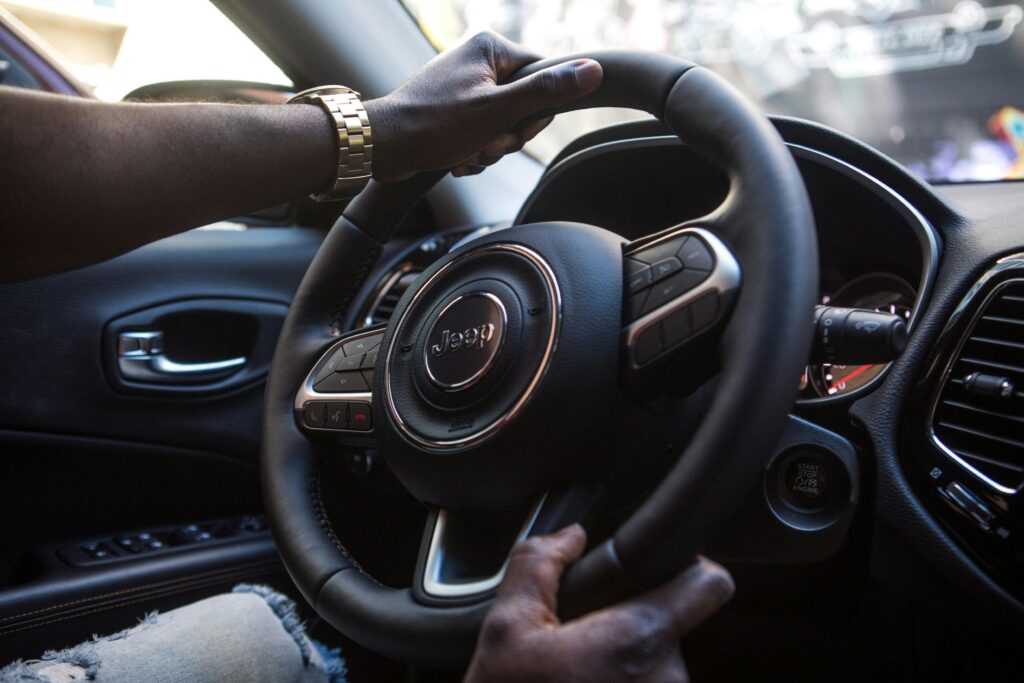
While mentioning the important parts of a car and their functions, it is essential to discuss the function of the steering system as well. The responsibility of the steering system is to control the directional movement of the car. It enables the driver to move the car in a left or right direction.
The steering wheel acts as a mediator between the steering stem and the driver. As the steering wheel moves, the position of the car wheels also changes from straight to the desired direction. The front wheels tend to go back to return to the straight position.
The steering gear boosts the driver’s steering effort and helps the car steer in traffic and curves. Other important sub-components of the steering system are the steering column, ball joints, drag link, steering arm, drop arm, track rod, lift tie rod, stub axle, steering stops, spindle, and kingpin.
There are three types of steering systems: power steering, rack and pinion, and ball steering. Power steering is commonly used in modern cars as it greatly reduces the efforts of the driver while turning the steering wheel.
Hydraulic power steering is a type of power steering that uses hydraulic pumps to pressurize the hydraulic fluid, which provides additional force for turning the wheels. Electrical power steering has an electric motor that assists in moving cylinders and reduces reliance on engine power.
In the rack and pinion steering system, the steering wheel’s rotational motion is converted into linear motion with the help of a pinion gear. The pinion gear is covered with a long rack, which provides stability to the front wheels. This rack forces the wheels to turn according to the rotation of pinion gear.
Further, in the ball steering system, the rotation of the steering wheel causes rotation of the shaft. The worm gear rotates, causing the ball nut to move, which directs the wheels to turn accordingly.
9) Suspension System
The suspension system is among the most important parts of a car and helps to reduce vibrations that may be felt on an uneven road surface. It is a network of various components, such as springs, shock absorbers, struts, control arms, tie rods, ball joints, control bushings, and connecting links.
The springs of the suspension system compress and expand according to the surface of the road. This helps to maintain stability and control of the car, providing a comfortable ride experience.
Further, the suspension system helps in providing stability during acceleration and braking. Thus, the movement of the wheels is controlled, and the risk of skidding is minimized.
While shock absorbers and struts help maintain stability in case of a bump or dip in the road, control arms help rigidly position the car within the wheel’s wall. The ball joint helps reduce the car’s vertical motion. Further, bushings ensure the car’s controlled movement.
10) Shock Absorbers
Though shock absorbers are often overlooked parts of a car, they play a crucial role in its smooth running. An integral part of both the suspension as well as braking systems, shock absorbers stabilize the car movement.
Its main responsibility is to ensure that the tires of the car always touch the road. It reduces the effect of the car’s vertical motion on bumpy, potholed, or uneven road surfaces.
Shock absorbers are cylindrical-shaped hydraulic devices with a piston rod. It contains hydraulic fluid that moves through small passages, compressing the springs that help the wheels to move upwards.
The hydraulic resistance converts kinetic energy into thermal energy, which is then released into the atmosphere. This reduces the transfer of vibrations to the chassis, thereby providing a comfortable ride.
As new models are evolving, the design of the shock absorbers, along with their desired performance, has started varying. Some shock absorbers have adjustable settings that help the driver to customize their suspension to certain driving conditions and preferences.
11) Catalytic Converter
The car generates various emissions, such as harmful gases and pollutants, when it runs. Here comes into play: a catalyst converter, which is one of the most important parts of a car.
Located in the exhaust system, it accelerates redox and catalytic reactions to convert toxic pollutants like carbon monoxide and hydrocarbons into less-toxic pollutants like carbon dioxide and water vapor.
It contains various metals, including platinum, rhodium, and palladium to accelerate the speed of these reactions. It is usually used with internal combustion engines, which use fuels like diesel and gasoline.
12) Lubrication System
While studying the important parts of a car and their functions, it is necessary to understand the lubrication system too. It ensures that all the moving parts of the car are well-lubricated.
The engine comprises many parts which rub against each other when they move and can wear out over time. It might also lead to high friction and heat buildup, which can damage the engine.
As a prevention measure, oil is circulated between the moving parts at accurate temperatures and pressures, thereby forming a protective layer between metal parts.
Oil, as a lubricant, passes through the main bearings of the piston pin.
It cools the moving metal parts and coats different car components, including pistons, bearings, and crankshafts. Along with a coolant, engine oil acts as a sealant to prevent possible leakage. The cylinder walls are covered with a thin layer of lubricant which enhances the functioning of seal rings and compressor.
Oil is circulated through the engine through the oil pump. This pump comprises gears and rotors that extract oil to force it into the lubrication system. Finally, the excess oil sucked out from the sump drains back into the sump.
Most modern cars have an oil filter consisting of porous media. The filter removes toxic contaminants from the oil, such as dirt or debris, while allowing oil to circulate easily through the components. This increases the shelf life of the engine oil, thereby increasing the overall efficiency and performance of the engine.
13) Ignition System
The ignition system is necessary to mention when it comes to discussing the important parts of a car and their functions. It operates on the principle of transforming chemical energy into mechanical power and is responsible for starting as well as powering the car.
Its primary function is to complete the internal combustion process in each cylinder of the engine at the right time through self-ignition or voltage spark. The ignition coil helps in transforming lower voltage to higher voltage current which can compress the air-fuel mixture to generate a spark in the combustion chamber.
When the ignition button is pressed or the key is turned, an electrical signal is sent to the ignition coil to generate a high-voltage current. This current gets transferred to the spark plug through a distributor. The spark plug is wisely placed on each cylinder of the engine and receives the current to produce sparks to initiate the internal combustion process in the engine.
Modern cars have electronic ignition systems with sensors to monitor and adjust the ignition timing according to the engine parameters. This not only improves overall engine performance but also helps in fuel efficiency while reducing harmful emissions into the atmosphere.
14) Transmission System
Next comes the most important component: the transmission system. Basically, transmission can be understood as the gearbox of the car. The function of the transmission system is to adjust the torque applied to the wheels from the engine by changing the gearing ratio between the shafts.
This gearing ratio determines the speed and direction of the car when the accelerator is pushed. Further, it helps in optimizing fuel efficiency, power delivery, and seamless acceleration.
Among the essential components of the transmission system are gears, clutch, torque converter, transmission fluid, valve body, and sensors. There are three types of transmission systems: manual, automatic, and continuously variable transmission (CVT).
Manual transmission or standard transmission works with the help of a gear, clutch, and gear lever. In this type of transmission, the driver manually puts effort to engage or disengage gears through the clutch and gear lever.
Though automatic transmission is the most commonly used transmission system, it works with the help of a complex network. It is based on the principle of a hydraulic system and consists of various components, including hydraulic torque motors, gear sets, and clutches.
Lastly, CVT uses a chain system instead of fixed gears to adjust the gear ratio.
15) Cooling System
As internal combustion takes place, the temperature of the car’s engine rises, which directly impacts other engine parts and electrical components. This can lead to engine damage or failure of other electrical components of the car.
Similarly, if the temperature of the car is too cold, it can severely affect the engine’s function. Thus, it is important to maintain an optimal working temperature irrespective of external factors. This gives rise to the need for a cooling system in the car.
The cooling system is like an internal climate control system that prevents overheating or overcooling of the car’s engine. Among the important components of this system are a radiator, coolant, water pump, and thermostat.
The radiator is like a heat exchanger that helps to release excess heat from the engine to the coolant. The coolant passes through thin tubes and effectively cools the heat released from the radiator before it reaches the engine.
The water pump ensures that the coolant circulates throughout the system, ensuring that each part works at optimal temperature. Further, the thermostat regulates the flow of the coolant by monitoring the temperature of the engine.
If the engine is cold, the thermostat gets closed, while if it is hot, the thermostat opens so that the coolant can pass through easily.
16) Wheels and Tires
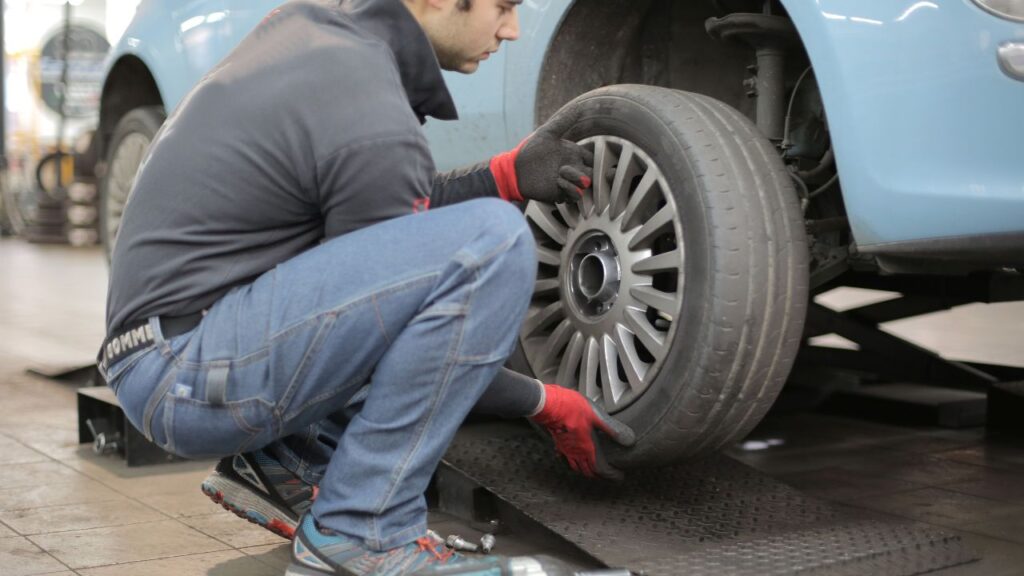
Wheels and tires are also among the important parts of a car. There are four wheels on a car: two front and two rear. They are usually made of alloy or steel.
Alloy wheels are lightweight, but their appearance is appealing. On the other hand, steel wheels have good durability and are relatively cheaper than alloy wheels. The design and sizes of wheels impact the car’s handling and comfortable ride.
Tires refer to the rubber-filled, black-colored part of the wheel. Different types of tires cater to drivers’ specific driving needs.
Summer tires are smooth and can run easily on dry surfaces, but they are not effective in wet conditions. Winter tires are made of flexible rubber compounds and have rough patterns suitable for driving through snow.
Further, there are all-season tires that have moderate patterns that provide enhanced performance in all conditions.
17) Speedometer
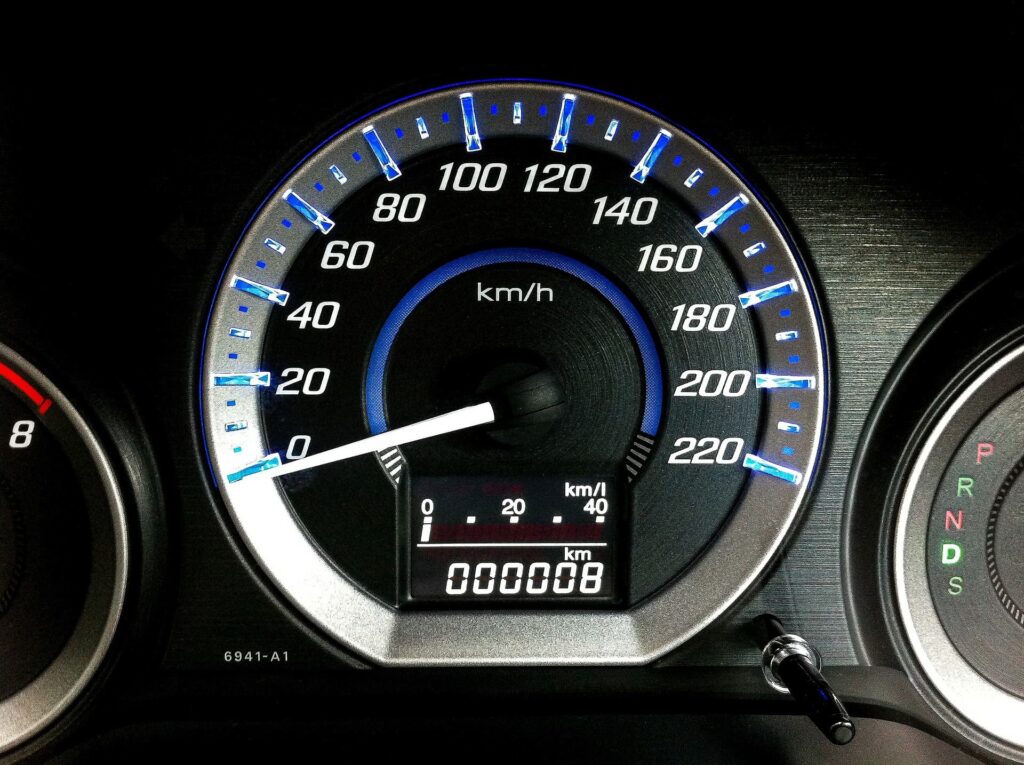
The speedometer is a car component necessary to mention when discussing the important parts of a car and their functions. Located in the dashboard, it is responsible for displaying the current speed of the car, either in miles or kilometers per hour.
Numbers are printed on the dial, showing the speed limits. There is a needle that points out the specific speed at which the car is moving. As it provides real-time data, it helps in adhering to legal limits and ensuring road safety.
Modern speedometers have additional features such as digital displays, customizable settings, etc.
18) Car Trip Meter
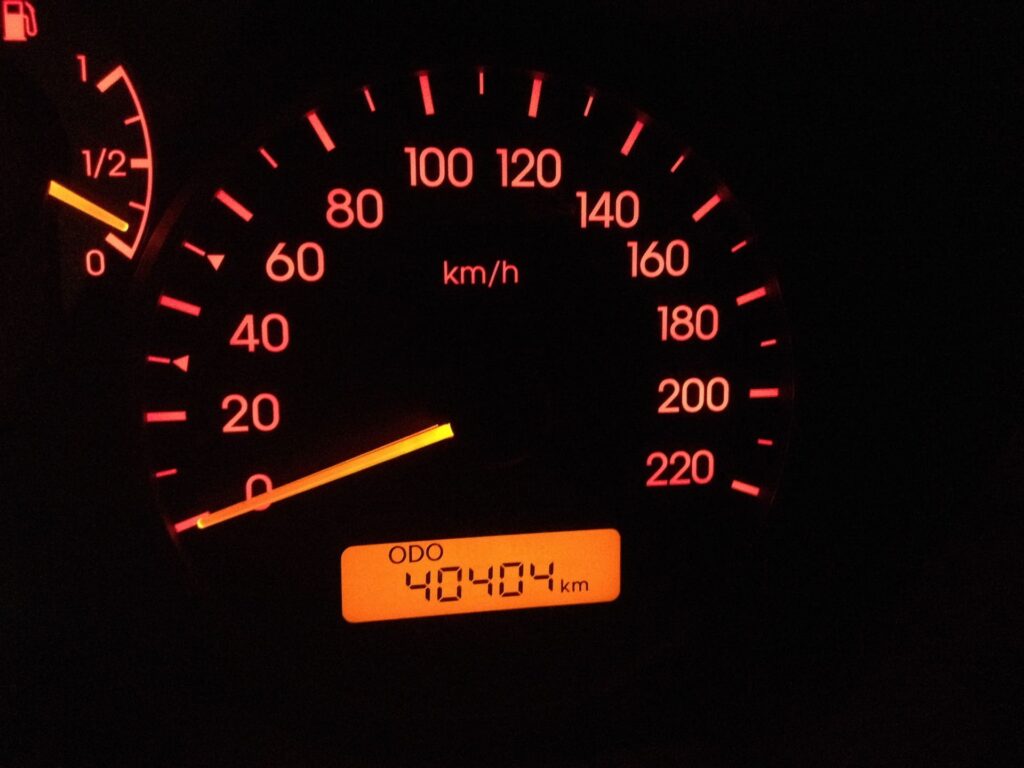
We can’t skip the importance of a car trip meter in a car. The car trip meter is a small tool found on the dashboard near the speedometer. It is much like an odometer with a small rectangle that displays the distance traveled in a specific journey along with the mileage.
When pressed more than once, the trip meter can display the overall mileage of the car. Since it provides real-time information, it helps in monitoring fuel efficiency.
Further, it has a reset function which assists in business mileage tracking. In modern cars, this odometer may contain digital parts, while in traditional cars, a set of mechanical numbers may be displayed.
Key Takeaways
Though there are various parts of a car, it is not possible to discuss each part in detail. Be a car enthusiast or a regular driver, this list of important parts of a car and their functions would have entertained you.
The insights into the functions of different parts can help you perform basic maintenance tasks and make informed decisions in case of any emergency. The technology is evolving at an exponential rate due to which automation of car components is taking place.
Though the future of transportation shapes unexpectedly, the basic principles and functions are unlikely to change with time.
[Also, check out: 10 Factors To Consider When Buying A New Car]

